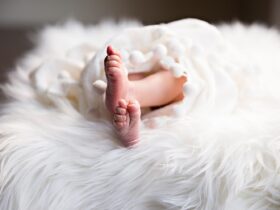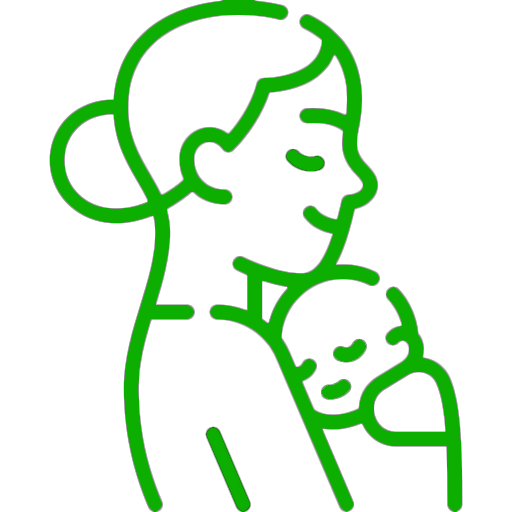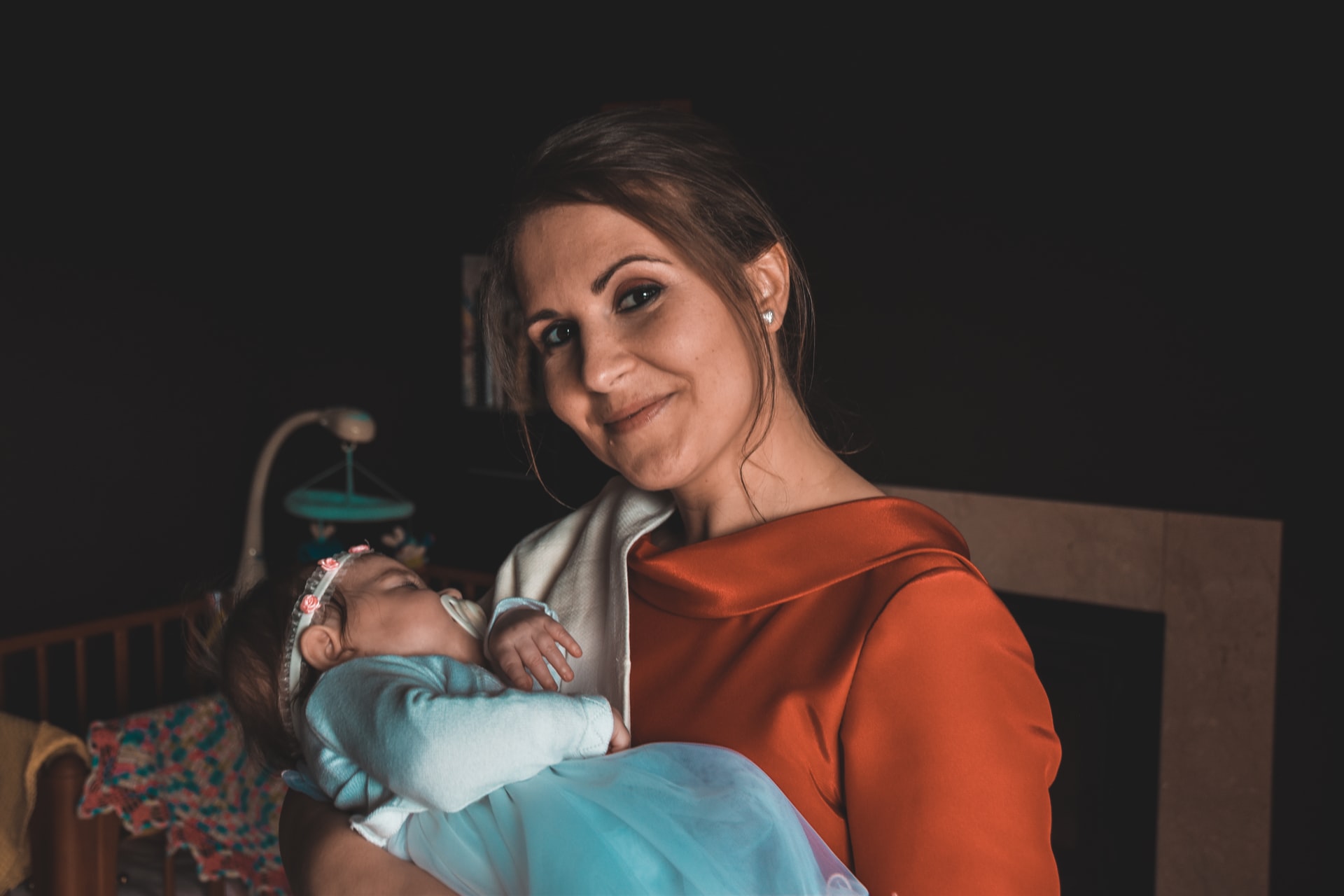If you have a baby sleeping on their stomach, they can roll over onto their backs, causing them to choke on their own vomit. Only 43.7 percent of mothers said they intended to and then did place their newborns solely supine. If you have a baby sleeping facedown, they can suffocate under their own weight. If you have a newborn sleeping on their side, they can roll over into a position where they cannot breathe.

The best way to keep your baby safe from choking is to make sure they are always sleeping on their back. This prevents them from rolling over onto their stomach or sides. Babies should never sleep on their tummies, as this puts them at risk of suffocation.
There are many factors that increase the risk of Sudden Infant Death Syndrome (SIDS).
Here’s all you need to know about newborn baby sleep positions—and how they compare in terms of safety.
Safest Sleeping Position for Newborn Babies: On the Back
1. On the back
The safest sleeping position for newborn babies is on their backs. This is due to the fact that they are not able to roll over onto their stomachs, which can cause them to choke on their own vomit. They have no control over their bowels and bladder, which means they cannot get themselves out of bed if they need to go. If they do wake up while sleeping on their backs, they will likely cry out in pain.
2. On your side
If you want to sleep on your side, make sure that you place pillows under your head and arm. Always strive to keep your feet flat on the floor. This way, you will not roll off of your side. Your legs should be straight and your knees bent at a 90-degree angle.
3. Flat on your stomach
This is the worst sleeping position for newborn babies. Because they have no control over their bowel movements, they may end up getting sick from their own waste. Also, if they wake up, they will likely cry in pain. Unsafe Sleep Positions for Babies
4. Face Down Sleeping Position
This position can put your baby at risk for SIDS (Sudden Infant Death Syndrome). This is because babies have a higher chance of getting stuck while sleeping face down. If this happens, they cannot breathe properly and may not wake up. Also, if your baby rolls over onto their stomach, they are likely to choke on their own saliva.
5. Side-lying Sleeping Position
Side-lying positions are great for babies who sleep well at night. However, side-lying puts your baby at risk for suffocation. When your baby sleeps on their back, they are able to move around freely and get air into their lungs. On the other hand, when your baby lies on their side, they are unable to move around and are prone to suffocate.
6. Back-sleeping Position
Back sleeping positions are great for babies that tend to roll over frequently. However, this position can cause your baby to become wedged between the mattress and the wall. In addition, if your baby rolls onto their stomach, they could choke on their own saliva and vomit.
Babies Sleeping on Their Stomachs
1. Babies sleeping on their stomachs are not only cute but they can actually help babies sleep better at night. When babies are put down on their stomachs, they are able to relax and fall asleep faster. This is because babies have a natural instinct to want to curl into a ball while sleeping. By putting them on their stomachs, this instinct is satisfied and they are able to fall asleep easier.
2. Babies sleeping on the side are also good for babies. When babies are placed on their sides, they are able to get comfortable and fall asleep quicker. They are also less likely to roll over onto their backs.
3. If your baby has trouble falling asleep, try placing him/her on his/her belly.
Babies Sleeping on Their Side
Baby Should Sleep On Their Sides
When babies are born they have their heads facing down. This position allows them to breathe easier while sleeping. As they get older, they start to turn over onto their sides.
The first few months after birth are critical for your baby’s health. They need to sleep on their backs to prevent sudden infant death syndrome (SIDS). This is because babies who sleep on their stomachs have a higher risk of SIDS than those sleeping on their sides. If your baby sleeps on his/her side, he/she may roll over onto his/her back. They may stop breathing as a result of this.
The reason babies sleep on their sides is that they are born with their bodies naturally curved. When sleeping on your back, gravity pulls down on your head, causing your neck muscles to tighten and pull your head forward. This can cause headaches and even lead to neck pain. If you have ever had a baby, you know how uncomfortable this position can feel.
Occasional Unsafe Sleep Positions for a Baby
This position can cause suffocation if your baby rolls over onto their face while sleeping. This is especially dangerous if they are lying on top of a pillow that has been used previously. If this happens, immediately roll them back over and check for breathing. If not breathing, call 911 immediately.
If your baby sleeps on his/her stomach, he/she may accidentally roll backwards and choke on his/her own tongue. Make sure that your baby’s head is supported by something firms like a crib bumper or pillow.
Your baby should always sleep on their side. Sleeping on their left side puts pressure on their airway and makes it difficult to breathe. Also, babies who sleep on their right sides tend to have ear infections.
Safe Sleep Solutions for Stomach- and Side-Sleepers
1. The best mattress for stomach sleepers
The best mattress for stomach sleep is a memory foam mattress that has a high-density core surrounded by layers of softer foam. Memory foam mattresses are great for stomach sleepers because they conform to your body shape and provide excellent pressure relief. They can help reduce tossing and turning at night and prevent back pain.
2. The best mattress for side sleepers
Side sleepers should look for a firm mattress that provides good support and doesn’t sink into the bed too much. A firmer mattress may be better than a soft mattress if you tend to wake up frequently throughout the night.
3. The best pillow for stomach sleepers
A stomach sleeper’s pillow should be thick enough to keep their neck from sinking into the mattress but not so thick that it causes them to feel like they’re sleeping on a brick. A stomach sleeper’s pillow should have a dense filling material that helps distribute weight evenly across the entire surface area.
The Rice-and-Towel Trick for Stomach-Sleeping Newborns
The Rice-and-Towel Trick for Stomach-Sleeping Newborns
1. Place a towel under your baby’s head while sleeping. This will help prevent stomach acid from coming into contact with their skin.
2. If they wake up at night, place them back down gently without waking them. This will allow them to fall asleep again.
3. When you change a diaper, try not to touch the baby’s face. This can cause irritation that may lead to a rash.
4. Don’t use any harsh chemicals on your child’s skin. These can irritate sensitive areas and make rashes worse.
5. Try to keep your child away from other children who have colds or flu. They are contagious!
6. Avoid using alcohol on your baby’s skin. Alcohol dries out the skin and makes it vulnerable to infection.
When it comes to baby sleep positions, there are a few things to keep in mind. First, always place your baby on his or her back to sleep. Second, make sure your baby’s head and neck are well supported. Use a firm mattress and avoid placing pillows or other soft bedding in the crib. Third, keep your baby’s sleep area free from clutter and loose bedding. This includes stuffed animals, blankets, and pillows. Lastly, do not allow your baby to sleep in your bed. This can be extremely dangerous and increase the risk of SIDS.









